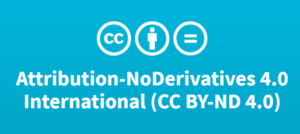//NEW RESEARCH: BEHAVIORAL STUDIES SUGGEST VAPING MYBLU ISN’T A GATEWAY TO SMOKING CIGARETTES, AND VAPING HIGHER STRENGTH E-LIQUIDS DOESN’T LEAD TO INCREASED USER DEPENDENCE
Posted 06/03/2023 11:55am
Two new pieces of peer-reviewed academic research by Imperial Brands have strengthened the existing body of scientific evidence suggesting our vape product, myblu, has a positive role to play in helping facilitate the public health concept of tobacco harm reduction (THR) for those adult smokers who remain uninterested or unwilling to stop using combustible cigarettes.
To make a meaningful contribution to public health via THR, scientifically substantiated Next Generation Products (NGP) like myblu must be both less harmful than combustible cigarettes and used by a significant number of adult smokers instead of cigarettes. This is reflected in the equation below.

Our research to-date in laboratory and clinical settings suggest vaping myblu offers adult smokers a satisfying, potentially harm reduced form of nicotine delivery.
However, there’s an important addendum to the THR equation.
As the modified equation below suggests, if significant numbers of unintended audiences (i.e. never-smokers/nicotine users, including young people) begin using products like myblu, this may act as a ‘gateway’ and subsequent ‘on-ramp’ into combustible cigarette smoking – which would significantly undermine the category’s public health potential.

There is a current debate that vaping higher-strength nicotine e-liquids may result in increased user dependence, which might further impede the THR potential of NGP like myblu.
As a responsible manufacturer, we carried out two Perception & Behavioural (P&B) studies to investigate – both recently published in the journal Drug Testing and Analysis.
- The first study examined users’ curiosity and intentions to use myblu to explore whether their responses suggested evidence of the ‘gateway’ theory.
- The second study focused on investigating the potential impact of myblu e-liquid nicotine strengths upon users’ self-reported measures of dependence to explore the concept that using higher-strength e-liquids resulted in increased product dependence.
Study 1: Curiosity and intentions to use myblu
For this research, data were analysed from two independent, multi-wave, nationally representative US surveys featuring young adults (18-24 years old) and adults (25 years old-plus).
The first survey assessed the prevalence of use, and intentions to use, both combustible cigarettes and myblu. The second assessed perceptions of the risks, benefits, addictiveness and appeal of cigarettes and vapes – including myblu.
Focusing specifically on myblu, the results from both surveys were as follows:
- In the perceptions survey, being curious to vape myblu was 1.6-2.0 times more likely in young adult current smokers than young adult never-smokers, and 2.8 times greater for adult current smokers compared to adult never-smokers.
- In both the perception and prevalence surveys, intentions to use myblu were significantly greater in young adult current smokers compared with young adult never-smokers. This was also the case with adults in the prevalence survey.
- Overall, only 124 of over 45,000 total participants (0.3% of the total survey population) reported first using myblu prior to progressing to becoming established smokers.
In conclusion, the survey data suggested curiosity/intention to use myblu – and actual myblu usage – more commonly occurs among intended populations (i.e. either current smokers, or those who have a history of cigarette smoking).
Equally, this positive public health potential was not compromised to any concerning degree by any unintended use, curiosity/intentions to use, or evidence of any ‘gateway’ effect between vaping myblu among never smokers – and subsequent ‘on-ramping’ into regular cigarette smoking.
Study 2: The impact of myblu e-liquid nicotine strengths on users’ self-reported measures of dependence
For this study, a combination of self-reported dependence among myblu users containing different nicotine concentrations was examined, alongside data from a multi-wave, nationally representative cross-sectional survey of 5,000 young adults and adults in the USA.
Our analysis suggested use of myblu with different e-liquid nicotine concentrations was not associated with any difference in the level of self-reported dependence when ‘strong past 30-day cravings’ or ‘time to daily first use’ was assessed. Additionally, young adults reported lower levels of overall dependence compared with older adults.
Our findings appear to contradict the notion that high e-liquid nicotine concentrations – which result in increased nicotine delivery – generate increased dependence. However, more research is needed to understand the potential range of additional factors beyond nicotine concentration which may also influence dependence.
Behavioural Sciences & Surveillance Senior Manager Layla Malt commented: “As a responsible manufacturer, it’s crucial NGP like myblu are effective tobacco harm reduction tools for their intended audience of adult smokers – and nobody else. It’s therefore encouraging to see there’s no correlation in the data between increased nicotine strength and increased dependence.
“Rather, these latest pieces of research add to the rich existing body of scientific evidence suggesting the importance of NGP optionality – with a range of nicotine concentrations crucial to helping facilitate successful switching away from cigarettes.”
Florence Greep, Imperial Brands EVP Category Director, concludes: “To create a product with the potential to help facilitate tobacco harm reduction, it’s essential to understand the perceptions and intentions of both intended and unintended audiences towards myblu – as well as how it’s used by adult smokers and vapers in-market.
“We’ll continue to undertake this kind of insightful behavioural analysis to ensure myblu and the next Imperial vape innovations, blu 2.0 and blu bar, play impactful roles in helping Imperial Brands make a meaningful contribution to THR.”
You are free to share this content with credit to Imperial Brands under a Creative Commons Attribution-NoDerivatives 4.0 International (CC BY-ND 4.0) license.

